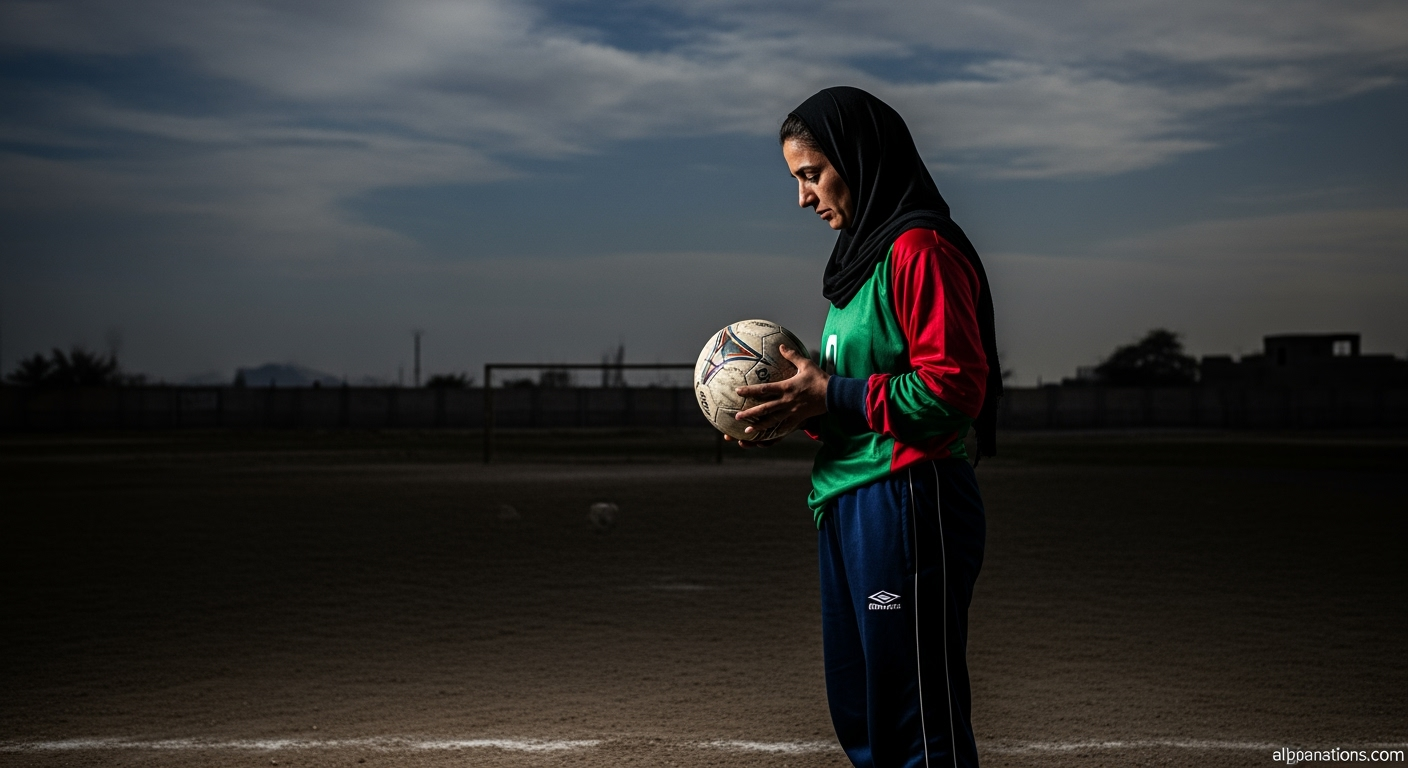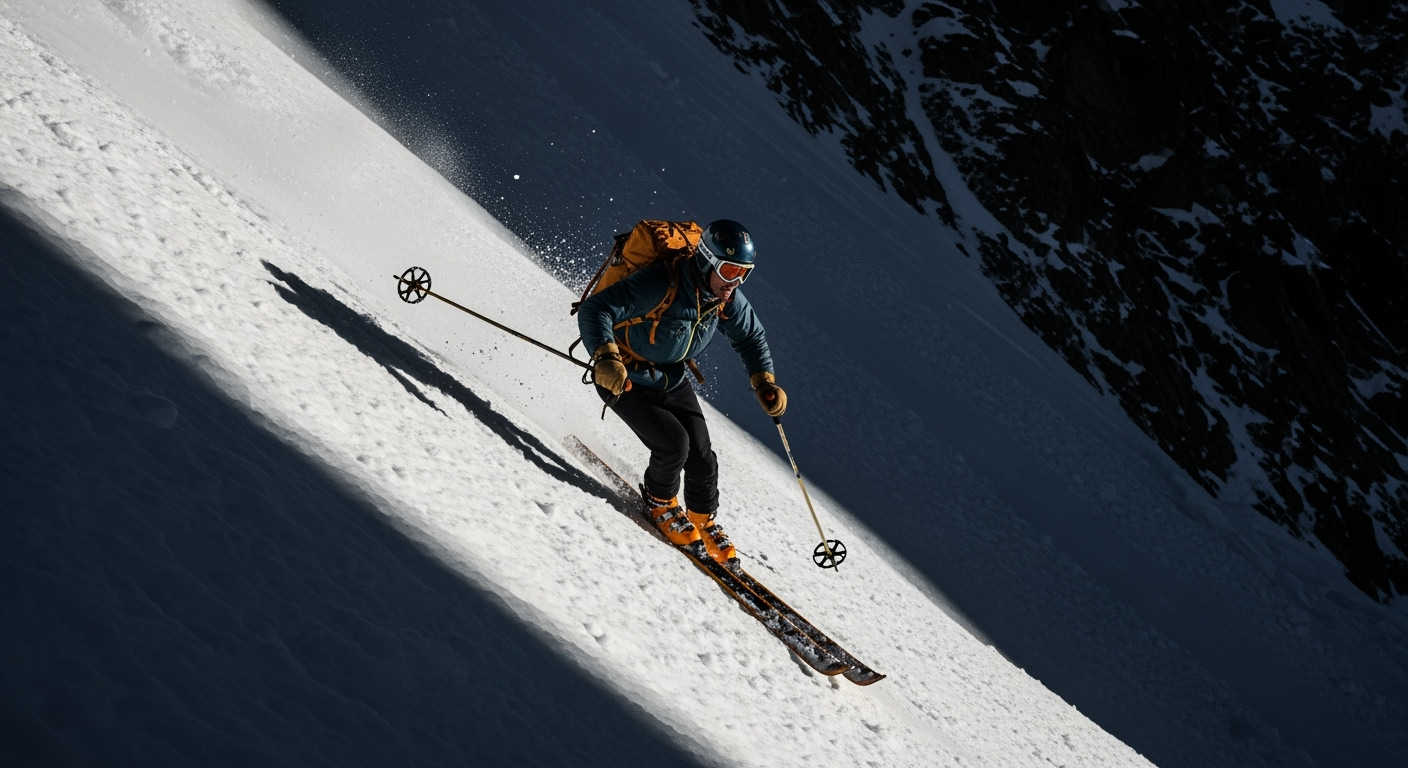Related Articles

Afghan Women's Football Team Forges Historic Path Back to International Arena After Years of Exile




KATHMANDU, Nepal – In a monumental achievement that redefines the boundaries of extreme ski mountaineering, American Jim Morrison successfully completed the first-ever ski descent of Mount Everest's treacherous Hornbein Couloir on October 15, 2025. This daring feat, long considered one of the last great unclaimed challenges in high-altitude skiing, saw Morrison navigate nearly 9,000 vertical feet of icy, steep terrain on the planet's tallest peak, fulfilling a dream he shared with his late partner, Hilaree Nelson. The historic four-hour, five-minute descent marks a pivotal moment in exploration, blending technical prowess with profound personal dedication and securing Morrison's place in the annals of mountaineering history.
The descent commenced after Morrison, 50, of Lake Tahoe, summited Mount Everest for the second time, reaching the apex at 12:45 p.m. local time on October 15. He then clipped into his skis for the perilous journey down the Hornbein Couloir, a route so direct and steep on Everest's North Face that climbers refer to it as the "falling-water line." Morrison's ski line involved linking the Hornbein Couloir with the Japanese Couloir, forming what has been dubbed the "Everest Superdirect" and marking the first successful ski or snowboard descent of this combined route.
The descent covered approximately 2,760 meters (9,055 feet) to Camp One, concluding safely at 7:45 p.m. China Standard Time. The conditions were reportedly "abominable," with a bare rock section forcing Morrison to remove his skis and rappel 200 meters, navigating past oxygen canisters left by the couloir's first ascenders in 1963, before resuming his ski. This successful ski descent from Everest's direct north face is a testament to meticulous planning, unparalleled skill, and extraordinary courage in an environment where even climbing is a monumental undertaking.
The Hornbein Couloir itself holds a storied and formidable reputation within the climbing community. Located high on the west side of Mount Everest's North Face, the narrow, steep gully extends from approximately 8,000 meters (26,200 feet) to 8,500 meters (27,900 feet) elevation, just 350 meters (1,150 feet) below the summit. Its inclination ranges from about 47 degrees for the initial 400 vertical meters to a staggering 60 degrees in its narrower, uppermost sections.
The couloir was first climbed in 1963 by American mountaineers Thomas Hornbein and Willi Unsoeld as part of the American Mount Everest Expedition. Their audacious ascent of the West Ridge and subsequent traverse into the couloir was a groundbreaking achievement, forcing them into an unplanned, highest-in-history bivouac at 28,000 feet without shelter. Since its initial ascent, the Hornbein Couloir has seen fewer than a dozen successful climbs, with the last recorded ascent more than three decades ago in 1991, underscoring its extreme technical difficulty and objective dangers.
Attempts to ski or snowboard this iconic line have been sparse and fraught with peril. In 2002, French snowboarder Marco Siffredi tragically disappeared while attempting a descent via the Hornbein Couloir, his body never recovered. This history of unyielding challenge cemented the couloir's status as the ultimate, unskied prize in extreme mountaineering, a status that Morrison's achievement has now definitively changed.
Morrison's successful descent carries a profound emotional weight, serving as a powerful tribute to his late partner and fellow ski mountaineer, Hilaree Nelson. Nelson, a celebrated National Geographic Explorer and pioneer in high-altitude skiing, died tragically in 2022 during a ski descent on Manaslu. Skiing Everest's Hornbein Couloir was a shared dream for Nelson and Morrison, who together made the first ski descent of Lhotse, the world's fourth-highest peak, in 2018.
The current expedition was Morrison's third attempt to ski the Hornbein Couloir. Efforts in 2023 and 2024 were thwarted by a combination of bureaucratic and logistical issues, including permit delays, bad weather, and an avalanche that injured a teammate. Despite these setbacks and the deep personal loss, Morrison remained resolute. At the summit, Morrison took a private moment to scatter Nelson's ashes, a poignant act fulfilling a promise and dedicating the day to her memory. "I had a little conversation with her and felt like I could dedicate the whole day to her," Morrison told National Geographic. His determination to honor Nelson's legacy transformed the arduous climb and descent into a deeply personal odyssey, blending grief, remembrance, and the pursuit of a shared vision.
The expedition, part of "The American Everest Ski Project," was a multi-million dollar undertaking supported by National Geographic and The North Face. It included a robust team of climbers and Sherpas, with Oscar-winning filmmaker Jimmy Chin, known for "Free Solo," among the 12 individuals who summited with Morrison. Chin and his partner Chai Vasarhelyi are producing a National Geographic documentary film, tentatively titled "Everest North," to capture the grueling physical and emotional journey.
Morrison's achievement stands as a significant milestone, not only for his personal triumph but also for the broader world of ski mountaineering. He has established himself as one of the most accomplished high-altitude skiers globally, with a resume that includes descents of Lhotse and Makalu. This latest success on Everest's Hornbein Couloir pushes the boundaries of what is considered possible in extreme sports, combining the sheer physical demands of Everest with the technical precision required for high-altitude ski descent. The meticulous documentation by National Geographic will ensure this historic feat, and the profound human story behind it, reaches a global audience, inspiring future generations of adventurers and honoring the spirit of those who dare to dream at the world's highest altitudes.